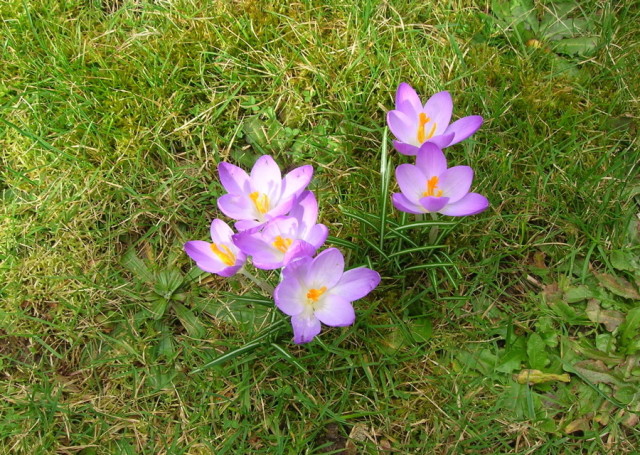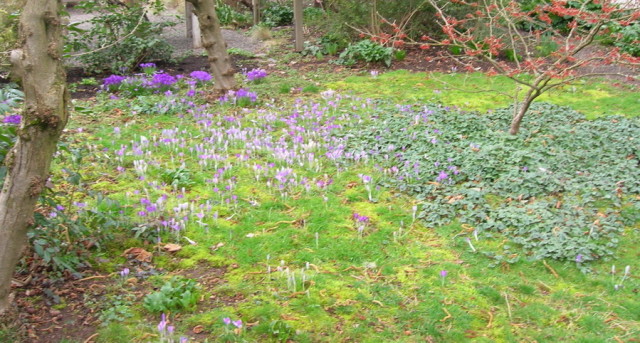Lawn Crocus

Spring comes in waves in the Pacific Northwest.
First we have the native osoberry (Oemleria cerasiformis ) whose green, chain-like flowers light up the woods in January. Next come the spicily-scented witch hazel flowers that unfurl as January progresses – a sweet, earthy reminder that winter will one day be over. Then the snowdrops send up their tiny white spears and gardeners everywhere sigh with hope that spring is just around the corner. Then come the adorable little purple crocus , heralding possibly the most important moment in the slow, tantalizing dance that is late winter in our region: the moment we’re over the "hump." The hump of winter, the hump of horrid weather – let’s just say we’re over the general hump of gloom. Of course the sunshine-yellow forsythia and golden daffodils are still to come. But by then, we’re already over the hump so they’re like icing on the cake.

This lawn circle at my old house was home to thousands of naturalized Crocus tommasinianum, as well as patches of hardy Cyclamen hederifolium that bloomed in autumn. There was always something in flower in that lawn!
Right now, just bring on those teeny little purple crocus – the ultimate in springiness!
There are many kinds of early species crocus. Crocus tommasinianus (pictured above and to right) – affectionately called "tommies" in England – are preferred for lawns because the flowers and foliage fade long before the grass needs mowing. But most of the delicate little species have slender, grasslike foliage and dainty, cupped flowers that would look natural in a lawn. The big, hefty purple, white and yellow ones sold in big boxes in, y’know, big box stores wouldn’t look so good in a lawn.
Instead, plant tiny treasures like Crocus tommasinianus, C. chrysanthus, C. biflorus, C. sieberi and C. flavus. They can be found in specialty bulb catalogs like Brent & Becky’s and Van Engelen Bulb Co. during the fall planting season. They are inexpensive at about $25 per hundred – and look especially fantastic in drifts, emerging from a mossy lawn. If you have to have a lawn, plant these all through the grass in the fall, clip the grass short in November and enjoy the tiny, often fragrant flowers in February.
